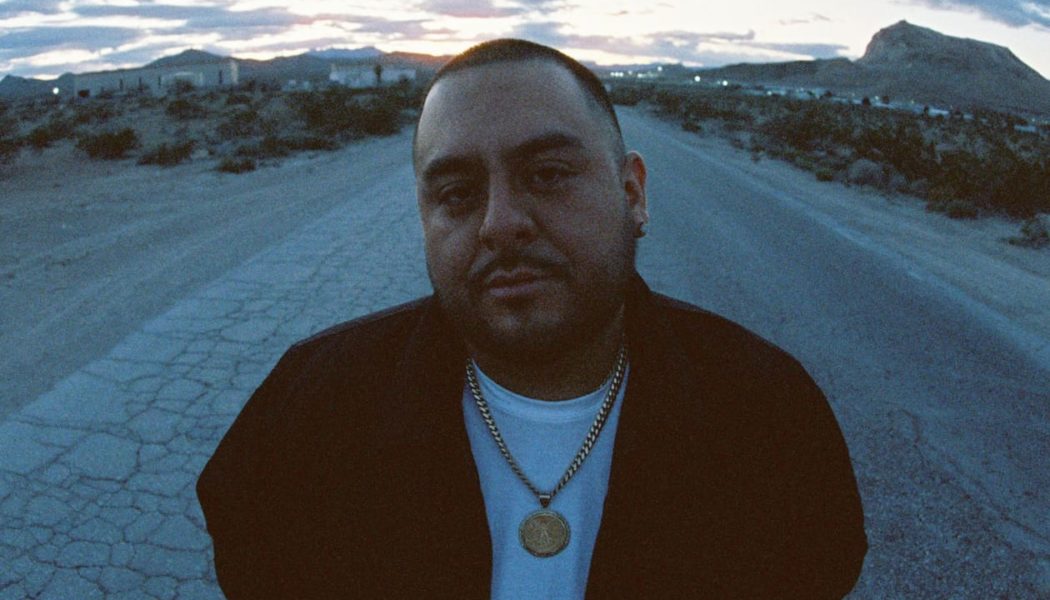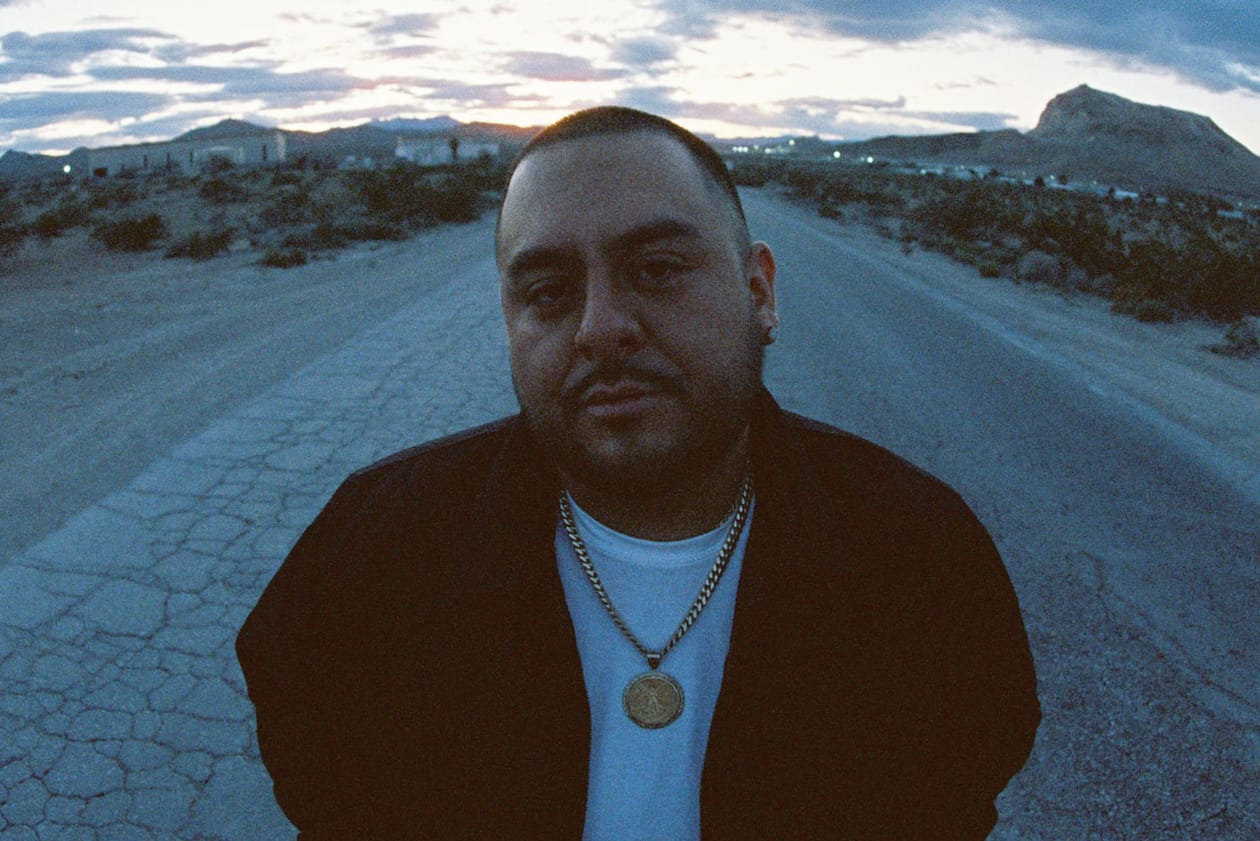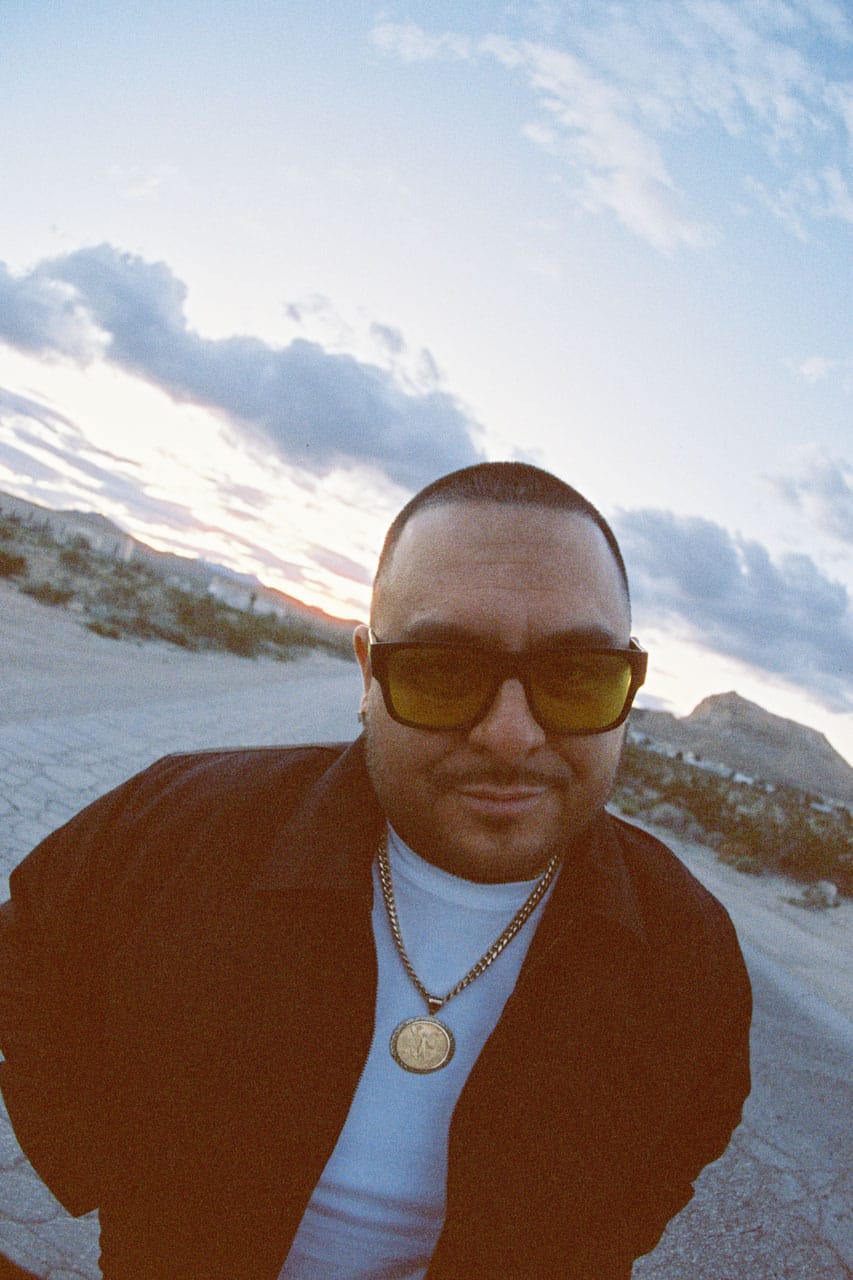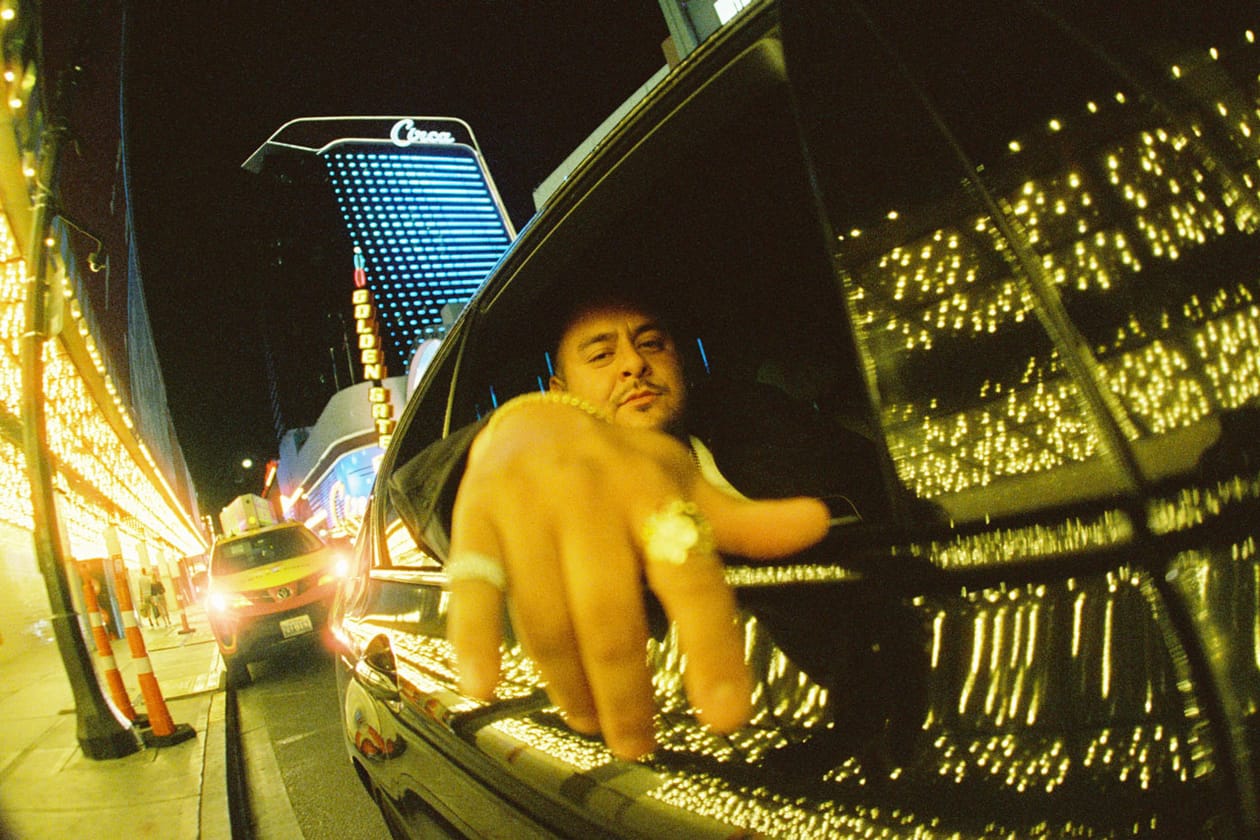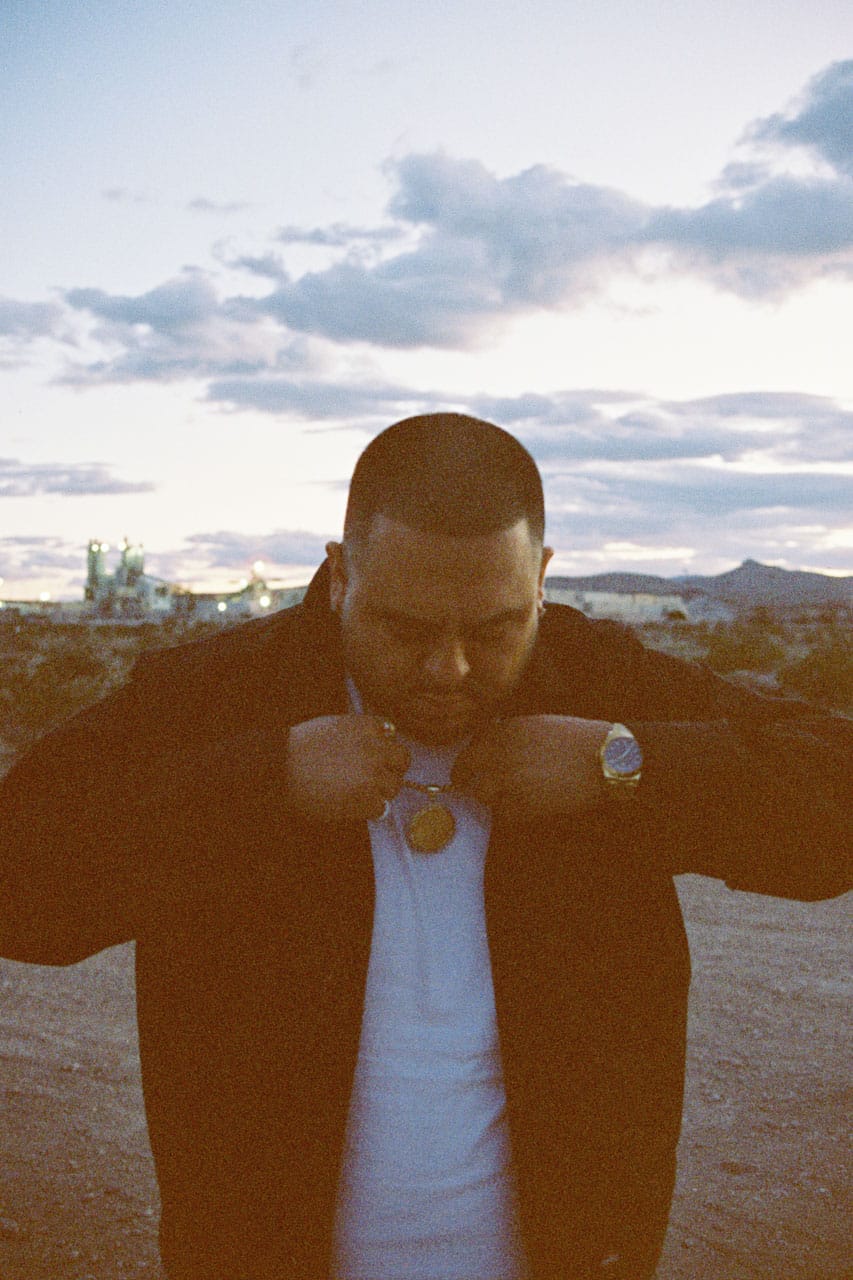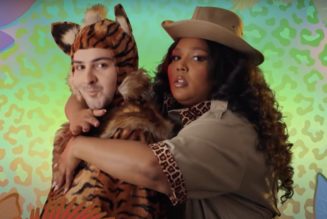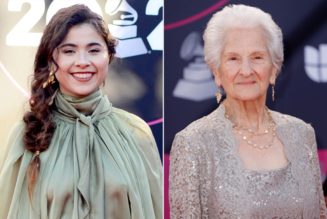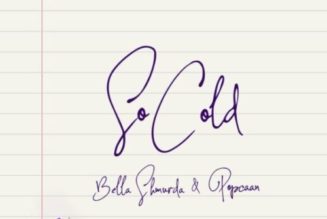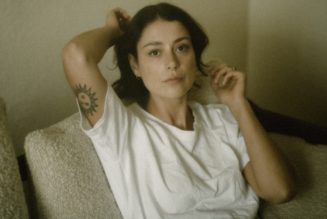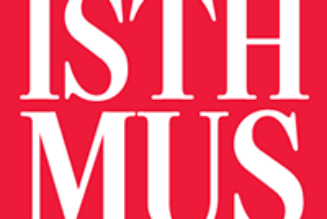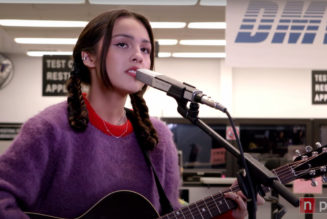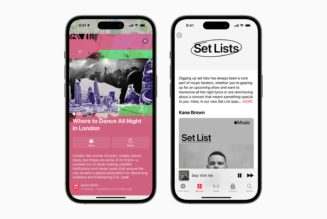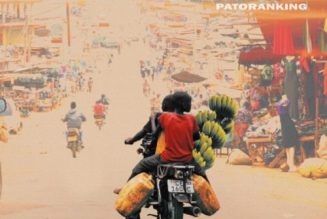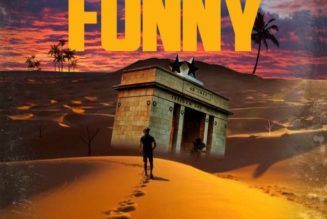You are reading your free article for this month.
Members-only
With production credits including Ye’s “Hurricane” and SZA’s “Good Days,” you’d think Nascent would be more of a household name. Self-nicknamed the “Tallest Mexican,” the Chicago-based producer, physically, is hard to miss at 6’6” – but it wasn’t until now he voluntarily elected to step out of the shadows and into the spotlight.
“It was all my choice to be in the background,” he clarifies. “I may have missed out on some opportunities but I wanted to be behind the scenes. That’s why I gotta publicist now.”
Having also produced for Chance the Rapper, Lil Wayne, and Brent Faiyaz, Nascent’s authenticity — something that radiates throughout his sophomore studio project, DON’T GROW UP TOO SOON — bleeds into all aspects of his storytelling.
Nascent’s parents had him when they were young; a first-generation immigrant, the family found home in Chicago, and from a young age, the producer was drawn to the city’s diverse sonic persona. After landing his first production placement on 50 Cent’s “Strong Enough” at 19, Nascent’s local clout began to bubble, allowing him to tap in with the hometown greats—Saba, Mick Jenkins, G Herbo, Noname, and Chance.
DON’T GROW UP TOO SOON, an album with a mantra to “live slow and die old” and even its own mascot (a furry blue monster), melds the sundry of sounds from Chi-Town. With the help of over 20 featured artists, Nascent taps into many different sonic pockets, including frequent collaborators Jordan Ward, Duckwrth and Orion Sun, other hip-hop heavyweights Maxo Kream, Ab-Soul and Paul Wall as well as a handful of unexpected and emerging contributors.
“I’m friends with almost all of the artists I work with, so I think that breeds more authenticity in the verses they give me,” he adds.
As for the aforementioned monstrous mascot, it “symbolizes everything we’re running from,” in Nascent’s own words. The album’s cover art – a painting of a child defeating the laid-out blue monster in the sandbox – pulls influence from a 1974 photo of Muhammad Ali knocking out Cleveland Williams. “The boy finally conquered it,” – and that’s the exact mindset that informed DON’T GROW UP TOO SOON. Inspired by a stumbled-upon assortment of home videos, the album arrives as an ode to the producer’s inner child.
When did you start producing?
I’ve been drawn to music since I was young, but my first love was basketball. Growing up, all of my friends played basketball. I started to follow music around fourth grade and then when I got to sixth grade I realized I wanted to pursue it.
What drew you to production instead of performance?
At first, I wanted to rap. I fell in love with hip-hop and I just wanted to be a part of it in a way that resonated with me. Once I started reading the credits of the albums I bought, I started looking into the producers. I was always drawn to the sound. I also didn’t want to be in the front. I wanted to be behind the scenes.
How did you come up with your stage name?
I was drawn to the definition of “nascent” when I saw it [“beginning to exist or develop.”] At first, I actually pronounced it wrong, but the concept of emerging and showing signs of potential really resonated with me.
What was your first production placement?
My first production placement was on 50 Cent’s “Strong Enough” when I was 19 years old.
How did that transpire?
I was mainly focused on saving my bread in high school, and after I graduated in 2007, I got an opportunity in New York City — so I used a lot of that money I’d saved to get out there, and the artists who I was supposed to work with ended up flaking on me. The next day, I was watching an Allhiphop.com interview with a bunch of the G-Unit staff – marketing, A&R, project managers– and I was like “Oh sh*t, I should just walk over to the G-Unit office.” So I found the address and walked with my suitcase from Madison Square Garden. The intern at the front desk helped me out big time, listened to some of my music right there and ended up getting it in front of some producers. I met with the A&R after that and 50 ended up picking my beat. I had to make the most out of that trip.
What’s your production approach?
There are no rules. I never go in with a tempo or vibe in mind. It’s more of a throw-some-paint-on-the-wall approach. It’s collaborative – me and the artist just going with our instincts. As a producer, though, it’s important for me to know when to pull back during the process.
How has your sound evolved?
Initially, I was doing really aggressive street rap stuff up until around 2011. That was when I met Chance The Rapper, Saba, Mick Jenkins and all of the Chicago guys and my sound started to evolve.
What about the Chicago sound do you enjoy?
I don’t know if it’s the rage or the soul, but the city has such a unique sound. There’s something in the water. There’s also a lot of Southern influence present. I try and embody all of the specific sounds and accents of the different parts of the city.
DON’T GROW UP TOO SOON has over 20 features. How did you pair people on the project?
I paired Saba and Duckwrth a few years back and it turned out great so I wanted to get them back together. One of my favorite combinations was Knucks and Pawpaw Rod. That was a complete experiment. I can’t say I had a master plan with that one. Jordan Ward and Rizz Capolatti are another one of my favorite duos because of the textural contrast in their voices.
How would you describe this album?
It’s a more refined version of my first project Minus The Bullsh*t. I implemented different textures and tried to deliver a vibe for everything – dance, hip-hop, hard, soulful, songs that get you in your feelings. I wanted to cover all bases while still making it cohesive. I didn’t want it to sound like someone just put it all together mindlessly. I’m friendly with all of the artists I work with and I think you can hear that in the songs. It’s authentic. Mostly everything was recorded in Airbnbs – nothing really in a studio. There’s something magical about making music in a kitchen with a microphone and it shows.
Who is the blue monster that appears throughout the album’s visuals?
He symbolizes our shadow and all of the things we’re afraid of. It’s everything we’re running from. He looks really scary from far away, but once he’s up close, he’s not that bad. He’s innately a part of all of us so I didn’t feel like I had to give him a name.
What are you running from?
For the longest time, the healing process. So much of the trauma we carry stems from our childhood, and so many people, myself included, don’t want to go back and confront that stuff. It takes a lot of accountability and courage to go in there and deal with that. When I found the tapes in the back of a closet, I began confronting a lot of stuff from my past.
How did this album allow you to heal your inner child?
I had so many hard conversations with my parents and friends throughout the process. It gave me more empathy for my parents too. They had me when they were really young, like 18. And once I realized that I knew nothing at 18, I understood them more. I’m first generation. My parents came from Mexico and there were a lot of expectations on me growing up. I felt misunderstood. I was supposed to go to college and get a job a house and get married and that’s it. Just like they sacrificed everything for their dream of coming to this country, I did the same thing. I told my dad, “If I’m an extension of you, what did you think I was gonna do?”
How do you stay connected to your inner child?
It’s so hard. Life gets in the way. You got life and bills and a relationship and everything. I think tapping into the same things that brought you joy as a kid is good for you. I loved Legos as a kid. They have some crazy Legos these days that I’ll pick up. Something else I do is buy certain sneakers I wanted as a kid but never had the money for.
What would you tell that child today?
“I told you, motherf*cker.”
Stream ‘DON’T GROW UP TOO SOON’ now.
